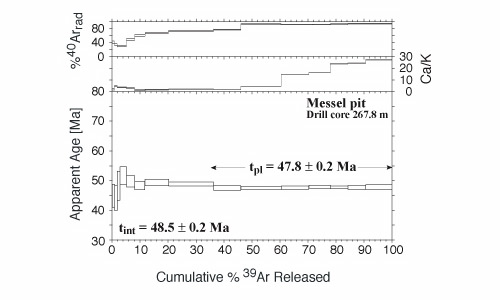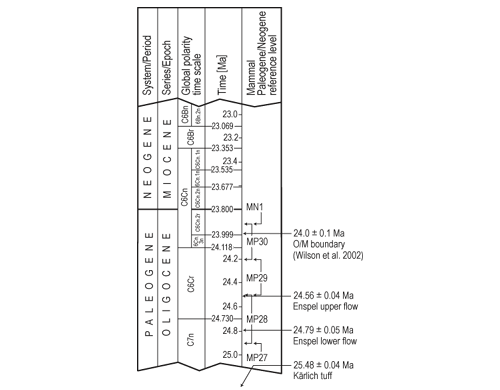

During the Earth's history terrestrical ecosystems not uncommenly were formed as a result of volcanic activity like Cenozoic maars occuring in the neighborhood of Mainz (Messel, Enspel, Eckfeld etc.). In such cases, by radioisotope dating the time of orgin and under opportunely geological circumstances the life time of the ecosystem and the corresponding fauna and flora can be established. These radiometric time marks are essential for the numerical calibration of the biozonation time scale as well as for answering paleontological, biological and climatological questions regarding the evolution of ecosystems in the Earth's history.
Recent publications related to this topic
Mertz, D.F., Renne, P.R., Wuttke, M., Mödden, C. (2006): A numerically calibrated reference level (MP28) for the terrestrial mammal-based biozonation of the European Upper Oligocene.- Int. J. Earth Sciences, DOI:10.1007/s00531-006-0094-6
Mertz, D.F., Renne, P.R. (2005): A numerical age for the Messel fossil deposit (UNESCO world natural heritage site) from 40Ar/39Ar dating.- Courier Forschungsinstitut Senckenberg, 255, 67-75

40Ar/39Ar age spectrum measured on a Tertiary basalt. Its intrusion represents an older time mark for the onset of the Messel fossil deposit (UNESCO world natural heritage site) sedimentation.

Chronostratigraphy, magnetostratigraphy and geochronology at the Oligocene/Miocene boundary as well as time intervals for MP (Mammal Paleogene) reference levels based on radioisotope dating.